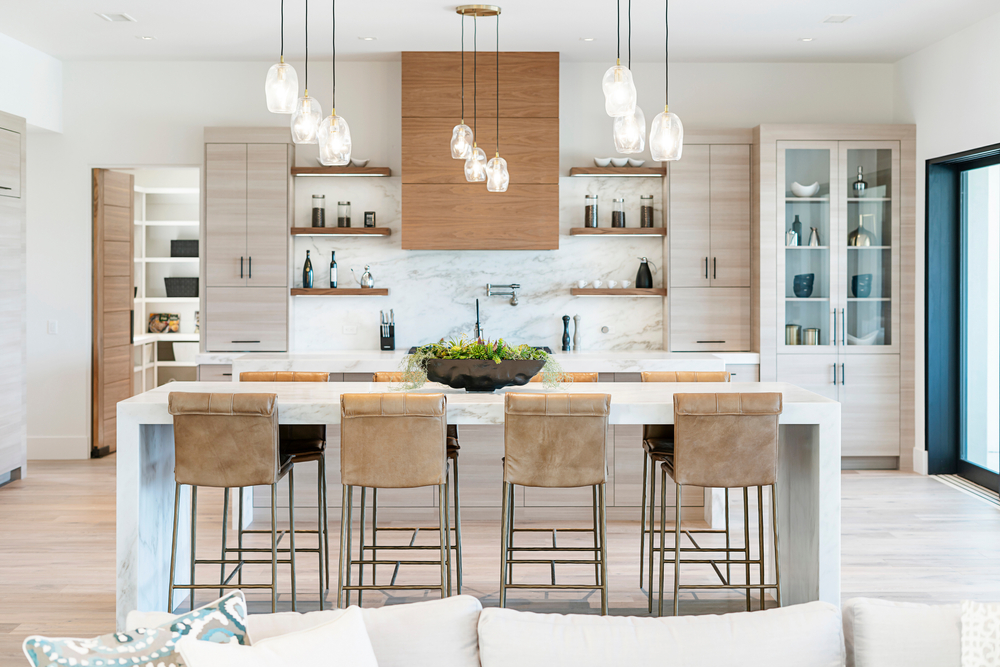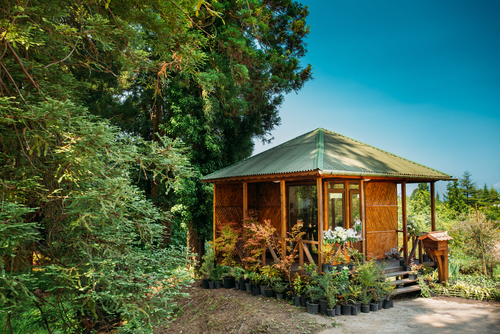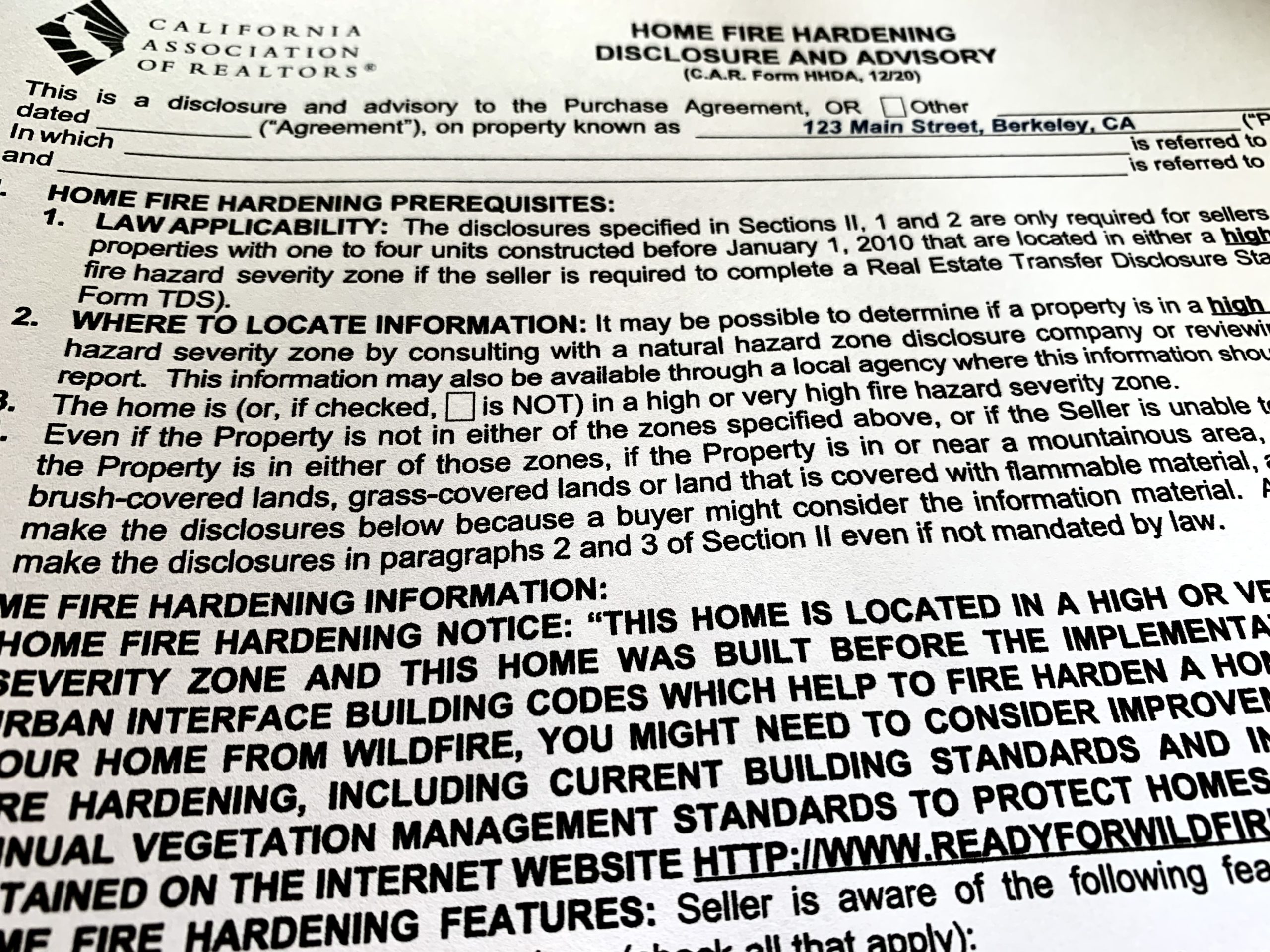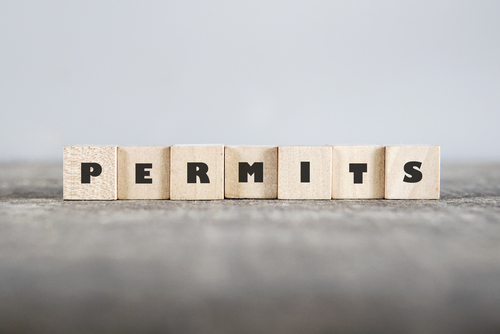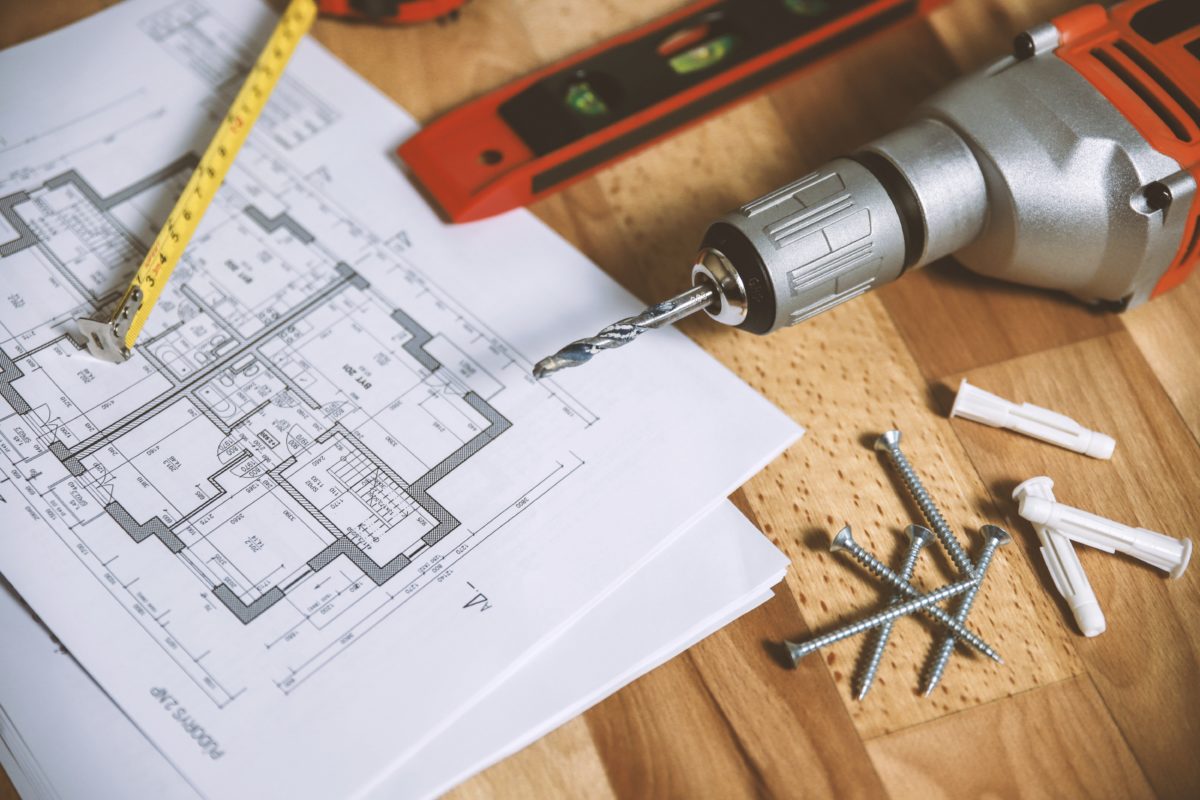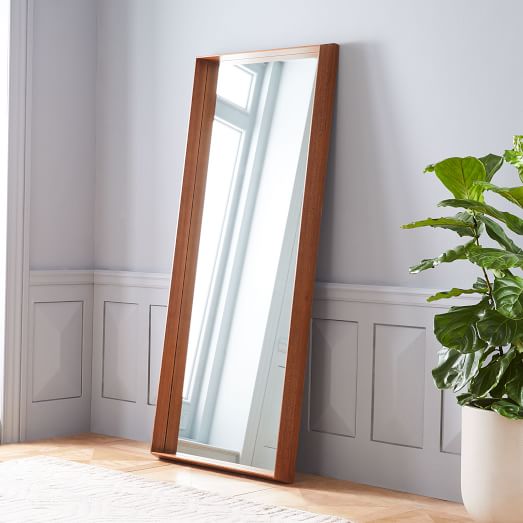REAL ESTATE ANSWERS: What design trends are you seeing now for kitchens?
What design trends are you seeing now for kitchens? Here are ten trends for kitchen design I have been seeing in publications and in our local market: Stark all-white kitchens are becoming less popular. People are looking for more warmth, which can come from materials or color. Unpainted wood cabinetry is increasingly popular; the grain and color of the wood add warmth and a natural element to the overall design. If cabinets are painted, we’re seeing less gray and less white, and more shades of blue, green, saffron, and ivory. The use of open shelving for storage is trending downward, [...]
REAL ESTATE ANSWERS: What kinds of projects can add lasting value to my home?
What kinds of projects can add lasting value to my home? Suppose you want to do some work on your home, and you want to choose a project that will add value, not just today, but into the future when you might sell your property. We all know that kitchens and baths sell houses, so remodeling either of those is an obvious possibility. However, if you have a long time horizon, there's a problem with that choice: remodeling is very style-dependent. If you remodel your kitchen now, but don’t sell your home for 15-20 years, you’re not going to get [...]
REAL ESTATE ANSWERS: What is home fire hardening, and do I need to do it?
What is home fire hardening, and do I need to do it? “We’ve learned from recent fires. Hardening your home and keeping the 5 feet closest to your house clear of flammable materials (including patio furniture and décor) greatly improves its chance of surviving a fire.” CALIFORNIA FIRE SAFE COUNCIL Fire hardening is making changes to an existing home to make it more resistant to wildfire. According to the Fire Safe Council, your home can catch fire in 3 main ways: from ember storms, where small pieces of burning material are blown in front of a fire (embers can apparently [...]
HOW TO CHOOSE LED BULBS
HOW TO CHOOSE LED BULBS I spend a lot of time looking at light fixtures and choosing bulbs, because replacing light fixtures is one of the most cost-effective ways to create an updated look in a home for sale. Choosing LED bulbs is surprisingly complicated, but here’s the step-by-step process that I use: 1: Figure out what shape bulb you need (including the size of the bulb and the type of socket). 2: Make sure to get bulbs for enclosed fixtures if your fixture is enclosed. 3: Choose the color temperature. (I always go for 2700K, which is like an [...]
REAL ESTATE ANSWERS: Why (and how) do so many local sellers spend so much money getting their homes ready for sale?
Why (and how) do so many local sellers spend so much money getting their homes ready for sale? Sellers in our area routinely spend tens of thousands of dollars on work and staging in preparation for putting their home on the market. (The amount obviously depends on the size and condition of the home, but $50,000 is pretty common these days). Why spend so much, when there are so many buyers out there? The first part of the answer is that yes, there are lots of buyers, but there are also other homes for sale, so it’s important that your [...]
REAL ESTATE ANSWERS: Why should you pull a permit for work done on your home?
Why should you consider pulling a permit for work done on your home? The #1 reason you should get a permit if you’re having work done on your home that requires it is the obvious one: it’s required by law, and you can have problems with the City if they discover you don’t have a permit, either as the work is being done, or after the fact. That said, it’s definitely the case that many homes in our area have work that was done without permits. Homeowners choose to skip permits for a variety of reasons, including the cost of [...]
Home Project Website
https://www.homewyse.com/ I saw a mention of the website above in a Money magazine article about home improvement projects, so I checked it out and thought it was worth passing along. It's a price calculator for home renovation and maintenance projects. You select a project, make some choices about the scope of the work, the quality of the materials and the type of contractor, enter your zip code, and they give you a rough estimated range for the cost. I found this really interesting. I cannot vouch for the accuracy of their numbers, but there is information about their methodology and sources on [...]
REAL ESTATE ANSWERS: What can I do to make a dark room brighter?
Some people love a cozy, darker space, but for others (and for getting top dollar in a sale), bright, airy spaces are optimal. How can you get this look in an existing home? The obvious answer is with remodeling—adding windows or skylights to let in more natural light. There are many ways to brighten a room, though, that don’t involve calling a contractor and spending lots of money. Here are some suggestions: Start by making the most of the windows you have. If it’s been a while since the windows were washed (note to self…), having them cleaned can make [...]
REAL ESTATE ANSWERS: What design trends are you seeing now for kitchens?
What design trends are you seeing now for kitchens?
Here are ten trends for kitchen design I have been seeing in publications and in our local market:
- Stark all-white kitchens are becoming less popular. People are looking for more warmth, which can come from materials or color.
- Unpainted wood cabinetry is increasingly popular; the grain and color of the wood add warmth and a natural element to the overall design.
- If cabinets are painted, we’re seeing less gray and less white, and more shades of blue, green, saffron, and ivory.
- The use of open shelving for storage is trending downward, as people factor in the impracticality and required upkeep. Some open shelving for display space rather than everyday use is still popular.
- Fancy statement-making range hoods are less popular, with more people opting for something simpler to fit in with a clean aesthetic.
- Countertop materials can go in two directions: we’ve been seeing more natural stone with color and patterns of flowing wavy movement, but a clean, simple quartz is also popular. Which of these makes sense in a design depends on the surrounding elements. Is the stone the statement piece in an environment that is otherwise clean and simple, or are there surrounding elements (wood grain on cabinets, or pattern on the backsplash or flooring) with which you don’t want to compete?
- Solid slab backsplashes, generally in the same material as the counters, are becoming more popular.
- Microwaves over the range are feeling dated.
- The trend from last year toward more natural materials like rattan or rope is continuing. In the kitchen, we see it on pendant lights and seating.
- For hardware, last year we saw a lot of matte black for faucets, cabinet handles and lights. Brass or gold finishes have also been popular for these items. These finishes have not gone away, but designers say that polished chrome is coming back, which is always a good classic choice.
Kitchens are an important component of property value, so it’s a good idea to consider how long you are expecting to be in the house if you are planning a remodel.
If you are going to sell the property fairly soon, you’ll get the best return if you factor in current trends. As the time until you’ll want to sell gets longer, the more it makes sense to choose more classic and neutral finishes for the big-ticket and harder-to-change components. Beyond a certain point though (20 or 30 years?) anything you choose today is likely to feel dated by the time you sell, so you can feel free to go for whatever you like the most!
REAL ESTATE ANSWERS: What kinds of projects can add lasting value to my home?
What kinds of projects can add lasting value to my home?
Suppose you want to do some work on your home, and you want to choose a project that will add value, not just today, but into the future when you might sell your property. We all know that kitchens and baths sell houses, so remodeling either of those is an obvious possibility. However, if you have a long time horizon, there’s a problem with that choice: remodeling is very style-dependent.
If you remodel your kitchen now, but don’t sell your home for 15-20 years, you’re not going to get much return on the project, because your “new” kitchen will be pretty outdated by then. (Of course, there is value in the enjoyment you’ll get from having a great kitchen or a luxurious bath in the intervening years, so you might still want to do the project!)
Here are three things, though, that are unlikely to go out of style: (1) an additional bathroom, (2) more usable space, and (3) a great yard. The first of these is straightforward: another bathroom (especially if there is no bathroom on one level, or no bathroom attached to the primary bedroom, or only one bathroom overall) adds value.
Adding usable space can mean an expensive addition to your home, but it can also mean improving a basement, garage or attic, adding an ADU, or even adding a detached shed. Did you know that you don’t need a permit to add a single-story shed of up to 120 square feet (although you are supposed to have a permit if you add plumbing or electricity). Adding a nice shed is a relatively cost-effective way of gaining a little
more space to spread out, or adding a workspace, something many people are looking for these days. If you go with a nicer shed, incorporate it well into the yard, and maintain it over time, the next owner will appreciate it too (and pay more for the property).
A great yard, with nice plantings and spaces to play and hang out, also adds a lot of value. If you are (or you have) a great gardener, then well-chosen plantings that mature over time can make a garden feel special. If you’re not a great gardener, and you don’t think new plantings will last and look great in the long term, you can still improve your yard (and the value of your property) with space planning and some hardscape design. The goal is to fully utilize the yard space you have. Can you use the side yard to create a play area, or add storage or a place to tuck away trash and recycling cans to make more space elsewhere? Can you create a flat area on a sloped space, with nice stairs to it, to add a pleasant hang-out space? Can you add planting beds in a sunny spot, for herbs or tomatoes or something else?
I recently helped some lovely but extremely busy clients, who were not big gardeners, sell a property where the previous owners had done substantial landscaping on the property. Some of the plantings in the yard were not in great shape, but the layout and a few big plants were still there. We brought in a gardener, who cleaned everything up and added new plants, and the yard was magical again. These sellers had also added a shed/office in back, and the combination of the gorgeous yard and the little bit of additional space led to a fantastic sale price for the property.
If there’s a good chance you might sell in the next 10 years, then remodeling a kitchen or bath will have a higher return. Keep in mind this general rule though: the longer the time until you’ll want to sell, the more important it is to choose more classic finishes, rather than what’s bold and trendy right now.
REAL ESTATE ANSWERS: What is home fire hardening, and do I need to do it?
What is home fire hardening, and do I need to do it?
“We’ve learned from recent fires. Hardening your home and keeping the 5 feet closest to your house clear of flammable materials (including patio furniture and décor) greatly improves its chance of surviving a fire.” CALIFORNIA FIRE SAFE COUNCIL
Fire hardening is making changes to an existing home to make it more resistant to wildfire. According to the Fire Safe Council, your home can catch fire in 3 main ways: from ember storms, where small pieces of burning material are blown in front of a fire (embers can apparently travel more than a mile!) and create spot fires when they land; from radiant heat, where the heat from nearby burning plants or structures is so intense that it can ignite a house without direct contact (this is especially problematic in densely populated areas, where homes are close together); and from direct flame, which can enter a home when plants under windows burn, breaking the glass and allowing the fire inside the home.
If your home was built in 2010 or later, your home should be pretty “hard”, because building codes were changed then to include hardening requirements. Most of the homes around here are much older than that, but even if you have an older house, you’re not required make changes for the sake of fire hardening. It is worth considering, though, given the massive fires we’ve seen around the state in recent years.
Since the start of 2021, there is a new disclosure requirement related to fire hardening for sellers of properties that are located in a high or very high fire hazard severity zone (and that were built before 2010). Sellers of those properties are required to disclose to buyers if a home has certain features that make it more susceptible to wildfire and flying embers. The features are: (1) eave, soffit, and roof ventilation where the vents have openings in excess of 1/8” or are not flame and ember resistant; (2) roof coverings made of untreated wood shingles or shakes; (3) combustible landscaping or other materials within 5 feet of the home or under the footprint of any attached deck; (4) single pane or non-tempered glass windows; (5) loose or missing bird stopping (which closes off the open ends of tiles on a tile roof) or roof flashing; and (6) rain gutters without metal or noncombustible gutter covers.
You’re only required to disclose vulnerabilities that you know of, and only if the property is in a high or very high fire hazard severity zone, and of course only if you’re selling. However, it’s a good starter list for all of us to consider for improving the fire safety of our homes, even if they’re not going to be for sale.
A state map showing fire hazard zones can be found at https://egis.fire.ca.gov/FHSZ/. You can zoom in on Berkeley and find a specific property, or look at the boundaries of what they consider the red VHFHSZ (Very High Fire Hazard Severity Zone) area.
For more information on fire hardening, check out ReadyForWildfire.org.
HOW TO CHOOSE LED BULBS
HOW TO CHOOSE LED BULBS
I spend a lot of time looking at light fixtures and choosing bulbs, because replacing light fixtures is one of the most cost-effective ways to create an updated look in a home for sale. Choosing LED bulbs is surprisingly complicated, but here’s the step-by-step process that I use:
1: Figure out what shape bulb you need (including the size of the bulb and the type of socket).
2: Make sure to get bulbs for enclosed fixtures if your fixture is enclosed.
3: Choose the color temperature. (I always go for 2700K, which is like an old incandescent light, or 3000K, which is a bit whiter, like a halogen bulb.)
4: Choose the brightness (measured in lumens, but most bulbs also relate the brightness to that of old incandescents, like 60W, 75W, or 100W equivalents).
5: Look for bulbs with a high CRI (Color Reproduction Index). I always look for bulbs with a CRI of 90 or higher.
6: If the fixture is on a dimmer switch, make sure the bulbs are dimmable, and that your dimmer switch is LED-compatible (if it’s not fairly new, it probably isn’t).
It is very complicated, so you can also choose to avoid all this by going into a local lighting or hardware store, and getting someone knowledgeable to help you. Once you know what the right bulb is, it’s much easier to pick up replacements or order them online!
REAL ESTATE ANSWERS: Why (and how) do so many local sellers spend so much money getting their homes ready for sale?
Why (and how) do so many local sellers spend so much money getting their homes ready for sale?
Sellers in our area routinely spend tens of thousands of dollars on work and staging in preparation for putting their home on the market. (The amount obviously depends on the size and condition of the home, but $50,000 is pretty common these days). Why spend so much, when there are so many buyers out there?
The first part of the answer is that yes, there are lots of buyers, but there are also other homes for sale, so it’s important that your home compares well to the competition.
The next part of the answer is that cosmetic upgrades can significantly increase the sale price. If someone is approaching a home purchase in a very rational, logical way, they’ll look at what a reasonable price per square foot for the property would be, and use that to decide what they’re willing to pay. In contrast, someone who is in love with a property thinks about it with emotion. The properties that sell for crazy-high, top-dollar prices are not selling to buyers who are doing rational calculations. They’re selling to buyers who are in love, and what makes buyers fall in love is not square footage or room counts, but rather style and design, and the ability to see themselves blissfully living in the home. Most buyers can’t envision how much a property can be improved with basic changes. If parts of a home are not to their liking, they picture major remodeling, at high expense, requiring lots of time and attention (which many buyers don’t have to spare).
Here’s one example. If the buyers don’t like the kitchen in a listed property, they almost always factor in the cost of a complete kitchen re-do, which can reduce their willingness to pay by $100K+. Most kitchens can be radically improved in a short period of time for much less, by doing things like painting and replacing things like counters, faucets, flooring, hardware and/or appliances. If you spend $20K (to choose a round number) to refresh the kitchen, and it makes the buyer content with the space, they won’t have to subtract that $100K+ from their offer (and they’re more likely to fall in love!). To create the overall picture and get buyers to fall in love, sellers around here routinely do some combination of painting, floors, staging, gardening, and refreshing the kitchen and bath(s). If a seller ends up spending $50K and gets an extra $200K from the sale, the return from the investment is 300%. That’s why they do it!
Note though that it’s not enough just to spend money on preparation and staging. The work done needs to be well-chosen, and targeted to the buyer pool. I’ve seen far too many houses where they’ve done lots of prep work, but it’s badly chosen, so there’s little return. A good agent understands what appeals to buyers, and will guide the process to make sure the final look is one that will bring you top dollar in a sale.
How do sellers pay for the preparation work? Many sellers pay up front, but there are also ways to borrow the funds or defer payment for the work done until the close of escrow. The best option varies with the circumstances, but I’m happy to discuss the possibilities with you if you’re thinking of making a move.
REAL ESTATE ANSWERS: Why should you pull a permit for work done on your home?
Why should you consider pulling a permit for work done on your home?
The #1 reason you should get a permit if you’re having work done on your home that requires it is the obvious one: it’s required by law, and you can have problems with the City if they discover you don’t have a permit, either as the work is being done, or after the fact. That said, it’s definitely the case that many homes in our area have work that was done without permits. Homeowners choose to skip permits for a variety of reasons, including the cost of a permit, the additional property taxes that might be triggered, the possibility that the work might not be allowed by the city for zoning or code reasons, etc..
Here are the top three reasons to consider getting a permit, though, beyond just that you’re supposed to do it:
(1) It’s good to have an external check on the work being done. Note that having a permit and the related inspections is not a guarantee that everything is done correctly, but at least someone with some knowledge is looking things over.
(2) If you’re adding square footage, and/or bedrooms and baths, the new space won’t have as much value in a sale if it is not permitted. An appraiser looking at a property doesn’t give full value to space if it’s not included in the public record and you can’t show that it was added with permits. Likewise, buyers may not value the space as highly because of potential issues with the appraisal, and because they may be uncertain about the quality of the work done.
(3) A permit sets the clock for the building code when the work is done. Suppose you add a bathroom without a permit, and the city discovers this at some later date. Possible outcomes could be that they require that the bathroom be removed, or that the work be inspected and brought up to current code and requirements. Even if the work was done really well, and complied with all building codes and zoning requirements at the time it was completed, those codes and requirements may have changed, and past work without a permit is not “grandfathered in” (i.e. allowed to stay because it conformed with past regulations). And, even if the codes or zoning have not changed, you still might be required to open up walls and undo things so that the underlying work can be inspected.
To permit or not to permit? I leave you to decide. One last thought though. If you are having work done with a permit, be sure to follow up with your contractor, and get a copy of the final inspection sign-off after the work is done. When I look at the online permit record for a particular property, I often see records for permits that were pulled, but never finaled. Sometimes the work was not completed, but many other times, the final city inspection was never done, or the city’s database doesn’t show that final inspection. By getting a copy of the final sign-off from your contractor, you know that the final inspection was done and passed, and you can prove it if something gets lost in the city records.
Home Project Website
https://www.homewyse.com/
I saw a mention of the website above in a Money magazine article about home improvement projects, so I checked it out and thought it was worth passing along. It’s a price calculator for home renovation and maintenance projects. You select a project, make some choices about the scope of the work, the quality of the materials and the type of contractor, enter your zip code, and they give you a rough estimated range for the cost. I found this really interesting. I cannot vouch for the accuracy of their numbers, but there is information about their methodology and sources on the site (under the Reference menu at the top). Whether or not their numbers are very accurate, it could be useful in getting a sense of the factors that determine the cost of a particular project that you’re contemplating.
REAL ESTATE ANSWERS: What can I do to make a dark room brighter?
Some people love a cozy, darker space, but for others (and for getting top dollar in a sale), bright, airy spaces are optimal. How can you get this look in an existing home? The obvious answer is with remodeling—adding windows or skylights to let in more natural light. There are many ways to brighten a room, though, that don’t involve calling a contractor and spending lots of money. Here are some suggestions:
Start by making the most of the windows you have. If it’s been a while since the windows were washed (note to self…), having them cleaned can make a big difference. Next, think about removing or lightening your window coverings. If you need some coverage for privacy, consider something sheer that will still let in light. Also consider whether you can get the privacy you need by only covering a portion (usually the lower portion) of the window. Top-down blinds, half curtains with the rod in the middle of the window rather than above it, or a frosted window film directly on the glass are all ways to block a portion of the window, while letting light in through the rest.
Hanging the curtain rod well above a window can make it seem bigger. Also, be sure the rod is wide enough that the curtains, when open, are not blocking the window. Move tall, bulky pieces of furniture away from windows, so they don’t cast shadows and block natural light.
Next, think about lightening the colors in the room. Choose light-colored or white paint for walls, and white paint for ceilings. If you have dark floors, consider light-colored area rugs. You don’t have to go all white throughout the room though. If you love color, add it with furniture, art and accessories. Using some dark accents will add depth to the décor.
Using mirrors is an old, but very effective, trick. I wouldn’t recommend mirrored wall or other surfaces (it would add light, but that look feels quite dated), but an oversized framed mirror, hung or propped up against the wall, especially across from windows, is a great look that really opens up a room.
Finally, adding lights, or choosing different lights, might be the perfect last step. Choose brighter bulbs for your existing fixtures if they can safely use them, consider if a lighter lampshade is appropriate, or add fixtures that bounce light across your (nice white!) ceiling. Pay attention to the color temperature of the light bulbs you use. I personally find the light from bulbs that have a color temperature around 3000K (this is like the light from a halogen bulb) to be bright and cheery, without being too cold. Stay away from bulbs marked “daylight” — that sounds like nice natural light, but it actually is a very cold blue light that feels very industrial compared to what we are accustomed to in a home setting.


